#47 Tucanae
Text
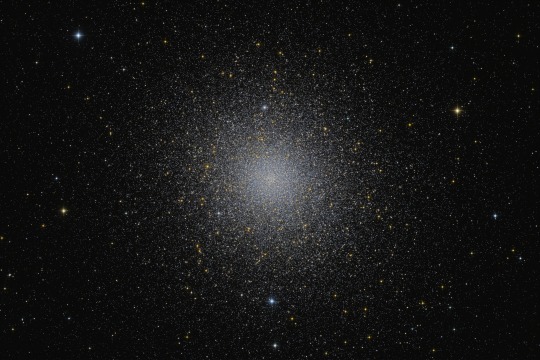
47 Tucanae // Wolfgang Promper
48 notes
·
View notes
Text
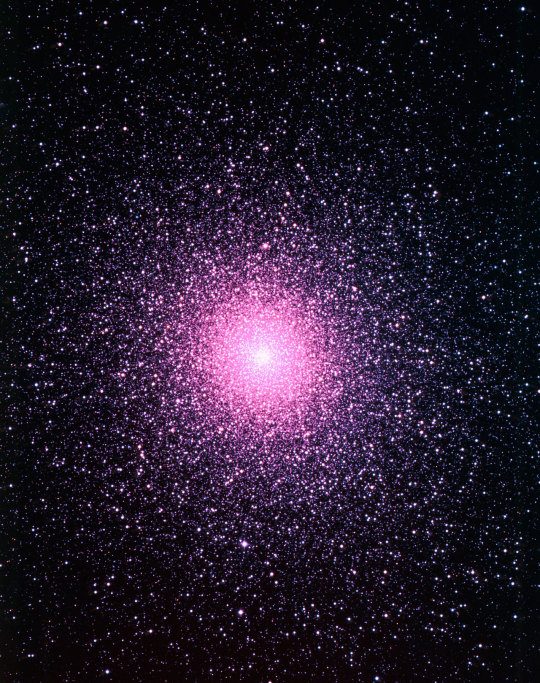
Bright Cluster
109 notes
·
View notes
Text
47 Tucanae
Globular Cluster 47-Tucanae.
#astronomy
Globular Cluster NGC 104
Image exposure: 75 minutesImage size: 1.99º x 1.3ºImage date: 2022-09-18
One of the two most conspicuous globular clusters in our sky, 47 Tucanae is also catalogued as NGC 104 and Caldwell 106.
With millions of stars, it is an amazing object both through eyepiece and camera, even at a distance of 15,000 light years. It is located 18º from the South Celestial Pole and…
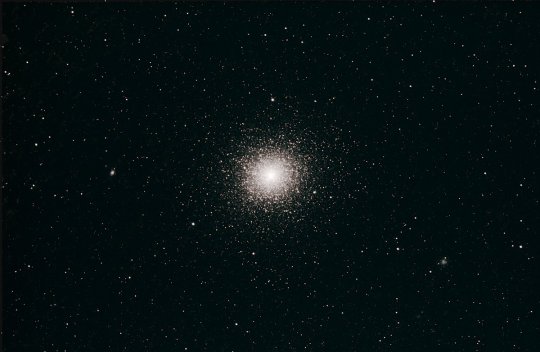
View On WordPress
#47 Tucanae#amateur astronomy#Astronomy#C106#Caldwell 106#Cosmic Focus Observatory#cosmos#creation#deep sky#Featured#image#nature#NGC 104#NGCC 121#open cluster#photography#science#Skywatcher esprit 120#Small Magellanic Cloud#SMC#space#Stars#Tucana#Universe#world#ZWO ASI 071 Pro
0 notes
Text
Making a rough schedule of what's going to be visible in the sky for stargazing on the weekend.
Imagine a star cluster, hundreds of Lightyears across, millions of years old, possibly inhabited, maybe even the site of huge space empires we can't detect,
And a human has the gal to designate it as "cool, but not that cool, it can be the warm up act to this other, more impressive nebula"
#i like to spread the best ones out. also save them for when night vision is at it's best#stargazing#all the other clusters must be jealous of 47 Tucanae
3 notes
·
View notes
Photo

2024 February 8
Globular Star Cluster 47 Tuc
Image Credit & Copyright: Marco Lorenzi, Angus Lau, Tommy Tse
Explanation: Globular star cluster 47 Tucanae is a jewel of the southern sky. Also known as NGC 104, it roams the halo of our Milky Way Galaxy along with some 200 other globular star clusters. The second brightest globular cluster (after Omega Centauri) as seen from planet Earth, 47 Tuc lies about 13,000 light-years away. It can be spotted with the naked-eye close on the sky to the Small Magellanic Cloud in the constellation of the Toucan. The dense cluster is made up of hundreds of thousands of stars in a volume only about 120 light-years across. Red giant stars on the outskirts of the cluster are easy to pick out as yellowish stars in this sharp telescopic portrait. Tightly packed globular cluster 47 Tuc is also home to a star with the closest known orbit around a black hole.
∞ Source: apod.nasa.gov/apod/ap240208.html
69 notes
·
View notes
Text

New SpaceTime out Monday....
SpaceTime 20240129 Series 27 Episode 13
NASA shuts down its Mars Ingenuity Helicopter Mission
NASA has been forced to end its history-making Mars Ingenuity Helicopter mission on the Red planet.


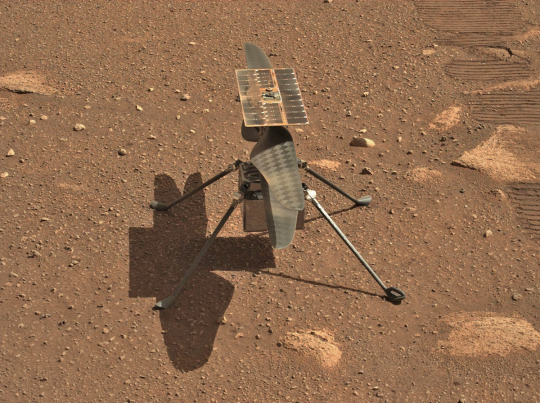
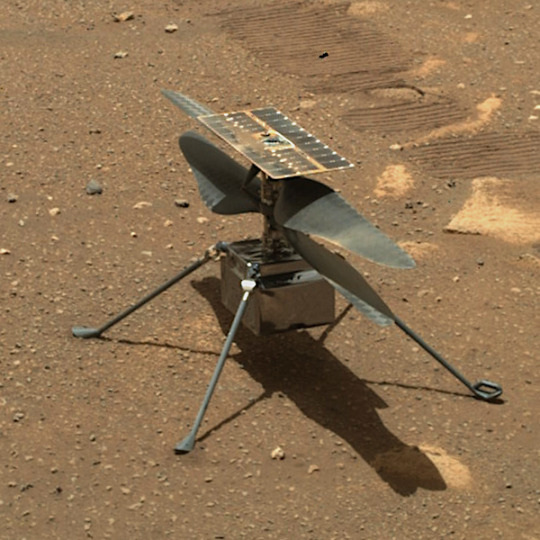



The mystery monster in an ancient globular cluster
Astronomers may have detected a monster in the heart of 47 Tucanae one of the most famous globular star clusters in the sky.
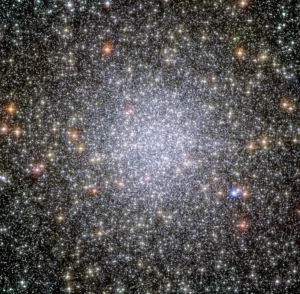

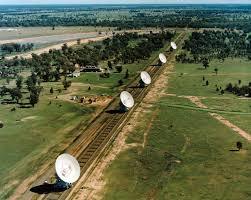


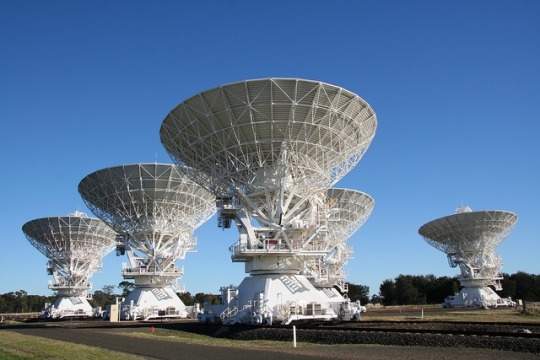
Could diamonds drive Neptune and Uranus' magnetic fields
A new study suggests that diamond rain in the dense atmospheres of the ice giants Uranus and Neptune could drive these distant worlds magnetic fields.

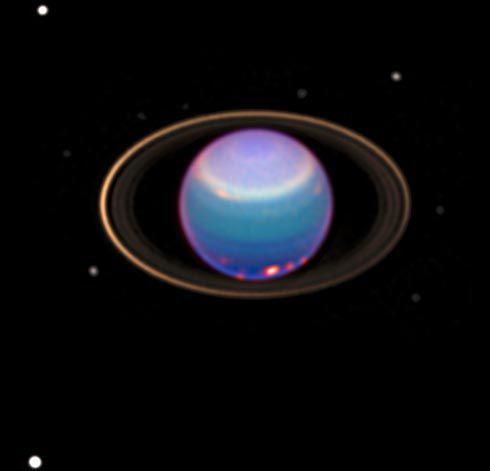


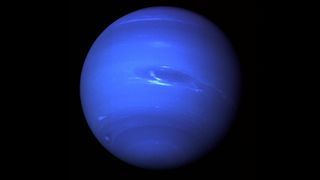
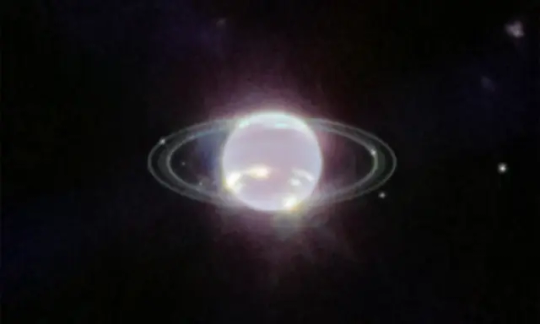

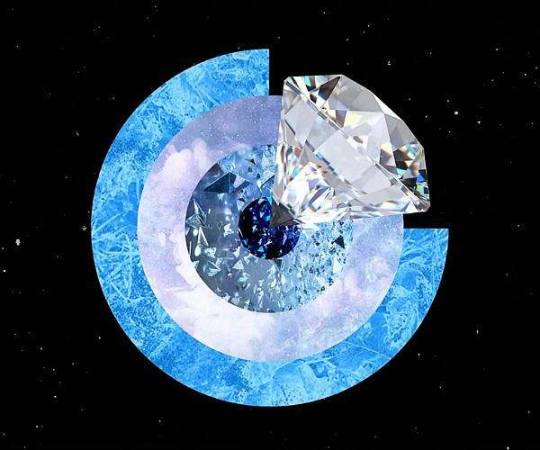
The Science Report
The link between climate change and human life span quantified.
NASA’s new experimental supersonic aircraft specifically designed not to generate a sonic boom.
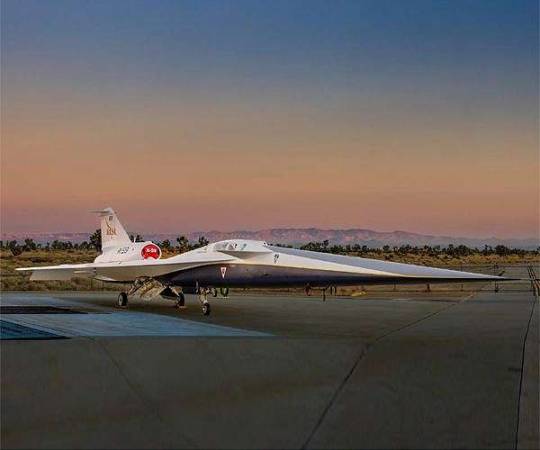
A new study has confirmed that most dogs love watching TV.
Skeptics guide a paranormal presence in your home
SpaceTime covers the latest news in astronomy & space sciences.
The show is available every Monday, Wednesday and Friday through Apple Podcasts (itunes), Stitcher, Google Podcast, Pocketcasts, SoundCloud, Bitez.com, YouTube, your favourite podcast download provider, and from www.spacetimewithstuartgary.com
SpaceTime is also broadcast through the National Science Foundation on Science Zone Radio and on both i-heart Radio and Tune-In Radio.
SpaceTime daily news blog: http://spacetimewithstuartgary.tumblr.com/
SpaceTime facebook: www.facebook.com/spacetimewithstuartgary
SpaceTime Instagram @spacetimewithstuartgary
SpaceTime twitter feed @stuartgary
SpaceTime YouTube: @SpaceTimewithStuartGary
SpaceTime -- A brief history
SpaceTime is Australia’s most popular and respected astronomy and space science news program – averaging over two million downloads every year. We’re also number five in the United States. The show reports on the latest stories and discoveries making news in astronomy, space flight, and science. SpaceTime features weekly interviews with leading Australian scientists about their research. The show began life in 1995 as ‘StarStuff’ on the Australian Broadcasting Corporation’s (ABC) NewsRadio network. Award winning investigative reporter Stuart Gary created the program during more than fifteen years as NewsRadio’s evening anchor and Science Editor. Gary’s always loved science. He studied astronomy at university and was invited to undertake a PHD in astrophysics, but instead focused on his career in journalism and radio broadcasting. He worked as an announcer and music DJ in commercial radio, before becoming a journalist and eventually joining ABC News and Current Affairs. Later, Gary became part of the team that set up ABC NewsRadio and was one of its first presenters. When asked to put his science background to use, Gary developed StarStuff which he wrote, produced and hosted, consistently achieving 9 per cent of the national Australian radio audience based on the ABC’s Nielsen ratings survey figures for the five major Australian metro markets: Sydney, Melbourne, Brisbane, Adelaide, and Perth. The StarStuff podcast was published on line by ABC Science -- achieving over 1.3 million downloads annually. However, after some 20 years, the show finally wrapped up in December 2015 following ABC funding cuts, and a redirection of available finances to increase sports and horse racing coverage. Rather than continue with the ABC, Gary resigned so that he could keep the show going independently. StarStuff was rebranded as “SpaceTime”, with the first episode being broadcast in February 2016. Over the years, SpaceTime has grown, more than doubling its former ABC audience numbers and expanding to include new segments such as the Science Report -- which provides a wrap of general science news, weekly skeptical science features, special reports looking at the latest computer and technology news, and Skywatch – which provides a monthly guide to the night skies. The show is published three times weekly (every Monday, Wednesday and Friday) and available from the United States National Science Foundation on Science Zone Radio, and through both i-heart Radio and Tune-In Radio.
#science#space#astronomy#physics#news#nasa#esa#astrophysics#spacetimewithstuartgary#starstuff#spacetime
17 notes
·
View notes
Text
I’ve recently begun work on a new animation project entitled The Music of the Spheres. If this title sounds familiar, it’s because it’s a very old concept dating back to ancient Greece and the mathematician Pythagoras. Known also as musica universalis, it’s “a philosophical concept that regards proportions in the movements of celestial bodies – the Sun, Moon, and planets – as a form of music. The theory, originating in ancient Greece, […] was later developed by 16th-century astronomer Johannes Kepler.” (from Wikipedia). Kepler discovered that the planets were exhibiting all of the ratios found in music, including octaves. They were, by their movements, mathematically expressing both major and minor musical scales.
The soundtrack is a gorgeous piece of music created by contemporary British experimental composer Suzie Shrubb entitled a tintinnabulation of cosmic scintillation. This piece is, quite literally, the music of the spheres. Here’s an excerpt from Shrubb’s statement: “The pitches in this piece correspond to those produced by pulsars from the 47 tucanae globular cluster situated in the region of the tucana constellation, approximately 16,000 light years from earth.” Needless to say, I was thrilled when Shrubb was excited about my film proposal and agreed to license her music as it’s simply perfect.
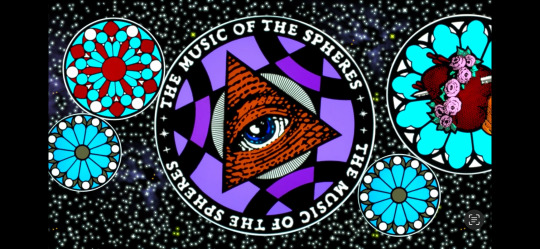
3 notes
·
View notes
Text
Clear clouds tonight... It was a beautiful view, even from my bottle 5-6 skies. I spotted 8 new constellations, and saw some of them with the naked eye! I also found Caldwell 106 (47 Tucanae) and the stars that make up Caldwell 20 and 21. Plus, I got to see Saturn, which is the first time I've seen it in a dedicated astronomy session that isn't 6:00 in the morning.
The night sky is beautiful, and it didn't take much to appreciate more than what our little eyes can let us. Grab some binoculars, doesn't matter what kind or how expensive, just regular 7x50 or 10x50 binoculars, get a decently dark site, and you can see so much in the sky. The world will open up to you like never before, and while you might not get the flashy views NASA shows you, you at least get to see things for yourself.
3 notes
·
View notes
Text
My attempt to develop this concept for a world in my own sci fi setting in a bit more detail; everything here is very much a first draft, names are probably placeholders, and so on:
The astronomical setting:
Gawela is a habitable moon orbiting the large superterrestrial planet Supa, a world with about 4-6 times the mass of Earth. Supa orbits Zeta Tucanae (a star a little brighter than Sol) at around 1.15 AU, an orbit at which it receives around the same intensity of illumination as Earth. Supa has pressure and temperature suitable for liquid water, but otherwise is not very Earthlike. It is almost entirely covered by a deep global ocean, with only a few small rocky islands sticking up above the waves. It has life, but only single-cell forms. The most common form of photosynthesis on Supa does not produce oxygen, and anyway biomass is relatively small as the ocean is not very fertile due to the lack of land to erode away and replenish it with dissolved minerals and nutrients, thus Supa's atmosphere has essentially no free oxygen. Supa has a thick reducing atmosphere; a witch's brew of carbon dioxide, nitrogen, methane, ammonia, hydrogen sulfide, and so on. Temperatures are quite warm due to the strong greenhouse effect, with a global average temperature above 320 K (47 C, 116 F); the combination of this with a global ocean climate creates a steamy, stormy, cloudy atmosphere. From space, Supa is a turbulent white sphere speckled and streaked with blue, its global ocean mostly hidden beneath white clouds. Supa's surface is a gloomy, stormy sauna, the sun usually hidden behind dark clouds, lightening and rain and fog frequent, the ocean soup-hot and turbulent.
Gawela orbits around 70,000 kilometers above Supa, an orbit that gives it a revolution period a little longer than an Earth day. Supa and Gawela are tidally locked to each other, so Gawela's revolution period is also their rotation period.
Supa has two other moons, Kindalun and Sekalun. They orbit much farther out, more than 700,000 kilometers from Supa, and are each comparable in mass to a small terrestrial planet such as Mars. Kindalun and Sekalun also orbit each other, with a separation of 20-30,000 kilometers; they are tidally locked to each other, and have a revolution period around each other and a rotation period of about 36 hours. There is evidence of past running water on at least Kindalun, but they are now both barren desert worlds - albeit still with thin but significant atmospheres.
Gawela, Kindalun, and Sekalun move in equatorial orbit of Supa, and Supa has a low axis obliquity but a significantly elliptical orbit. Thus, the seasons of all four worlds are driven primarily by Supa's changing distance from Zeta Tucanae, and are essentially worldwide.
Kindalun, the larger outer moon, is similar to Mars, though warmer. It has a thin, dusty atmosphere of mostly carbon dioxide. From space, its surface is mostly a mix of red, brown, yellow, and dirty white, the patterns shifting over time as winds blow around the finer dust and sand, alternately burying and exposing rock and heavier, more coarsely grained dirt and sand of different composition. White caps of water ice crown its polar regions. It is known, indeed, for being a particularly colorful and visually beautiful example of an Arean class world. There are extensive sandstones and mudstones, testifying to a wetter past, but today it is mostly too cold for running water, and even when temperatures rise above 0 C its air pressure is now so low that rather than melting any water ice present sublimates, changing directly from solid to vapor without passing through a liquid stage. Its surface is mostly a mix of rock barrens and vast dune fields like seas of sand. At certain times of year its surface sometimes becomes hidden beneath massive global dust storms like those of Mars. Evidence indicates primitive but extensive surface life on Kindalun during its wet period, but with the deterioration of conditions this life has basically disappeared from the surface. However, some microbial life does survive on Kindalun, deep beneath the surface, where pressure and geothermal heat is sufficient for liquid water to exist in cracks in the rock and in pockets of, essentially, wet dirt.
Sekalun, the smaller world, is more like a super-sized version of Luna, though it is somewhat more colorful when seen from space due to factors of local geology, and it has a thin dusty atmosphere of mostly carbon dioxide. At present it is cold, barren, dry, cratered, stony, and relatively geologically inert, but scars of ancient volcanism testify to a more active past.
Some notes on Gawela:
A relatively large amount of carbon dioxide in its atmosphere and a relatively large amount of dark light-absorbing ocean makes Gawela a warm world, with an average temperature around 20 C, comparable to Earth during the Cretaceous greenhouse era. It has no polar ice, and indeed little ice or snow of any kind. Its seasons are essentially worldwide, driven by Supa's varying distance from the sun rather than its minimal axis obliquity.
Most of Gawela's land is concentrated in a single large continent, roughly centered on the equator, with its long axis aligned roughly southwest to northeast, and extending to approximately 50 N and 50 S. In the central region of this continent there is an extensive complex of mountains and highlands created by the tectonic plate collisions that formed this supercontinent. The presence of this highland region and the planetwide seasons creates a powerful monsoon system that dominates weather and climate on the continent; in perigee summer rising air over the highlands sucks moist air in from the oceans and creates torrential rains over much of the continent, while in apogee winter the effect reverses and there is a pronounced dry season. Thus there are strong seasonal contrasts despite the essentially perennial warmth. Before the agricultural era the coastal regions of the continent were largely covered by extensive forests, especially in the east, while much of the interior is more arid.
The large outer moons generate stronger tides than Luna generates on Earth. Thus, in regions where the coastal slope is gentle there are extensive coastal barrens of sand, mud, and scoured rock, and in some regions extensive coastal salt-tolerant swamp forests (the best Earth analogy is probably mangrove swamps and the seasonally flooded forests of Amazonia). Much of the coastal slope is steep, due to the energetic coastal erosion (which is convenient for sailors, as it means an abundance of deep water ports, useful on a world with high tides), and seaside cliffs are plentiful. There are many intertidal animals with adaptations that help them survive the pronounced (up to 10 meters in some regions) daily rising and falling of the oceans.
In addition to tides from the outer moons, Gawela experiences eccentricity tides caused by the variance in Supa's gravity as Gawela moved toward and away from Supa. Today, Gawela's orbit around Supa is nearly a perfect circle, and these eccentricity tides are small. However, millions of years ago Supa's satellite system drifted into a resonance that pumped up the eccentricity of Gawela's orbit. During this era Gawela's oceans rose and fell hundreds of meters each day, while the powerful tides generated substantial tidal heating in Gawela's interior, causing intense volcanism (and intense heat as the volcanoes pumped large amounts of carbon dioxide into Gawela's atmosphere). This resonance has since broken, and tidal dissipation has long ago re-circularized Gawela's orbit, so Gawela has comparatively pleasant conditions today. However, a visible legacy of this era is large amounts of hard, black volcanic rock. In arid regions there are still extensive barrens of ancient cooled lava and the black sand produced as this rock weathers, while in wetter regions this ancient black rock often pokes through overlying soil and vegetation.
Some notes on civilization on Gawela:
Some time between 1-2 million years ago, small populations of Homo erectus were transplanted to multiple worlds in Sol's nearby stellar neighborhood, including Gawela. The Homo erectus of this era were not yet anywhere near modern human level intelligence (though they were already substantially smarter than chimpanzees; they were smart enough to make fire and to make relatively sophisticated tools such as simple spears). Clearly, such beings did not reach other solar systems on their own. Maybe some aliens established a colony on Earth for a while, domesticated some of the local Homo erectus and used them for simple tasks, and found them useful enough to spread some to other worlds, and then eventually these aliens died out or Went Beyond the Rim or something and these domesticated Homo erectus populations remained in place and survived by going feral, reverting to something similar to the lifestyle of their pre-domestication ancestors. Alternately, maybe aliens a bit like the Preservers in Star Trek or the Monolith-builders in 2001 saw potential in the Homo erectus of this era and decided to spread them around a bit to give them a second (and third, and fourth, etc.) chance in case the species went extinct or stagnated on Earth and to stimulate their evolution by introducing them to novel environments (this has the interesting implication that what I've just described may be just a tiny part of their activities around the galaxy).
As happened on the Earthlike worlds of Tau Ceti, Epsilon Indi, 82 Eridani, and so on, the process that drove the evolution of human intelligence seems to have continued in parallel on Gawela until it encountered the same fundamental limitations it did on Earth (e.g. the large infant head problem). However, the somewhat different conditions on Gawela pushed the species to evolve in a somewhat different direction than on Earth; as on some other worlds, the result was a species (arguably, technically a subspecies as hybridization with Homo sapiens sapiens is still possible) about as smart as Homo sapiens sapiens and closely related to us but rather different from us (an equivalent but different in details process on a different world created these people).
The indigenous development of Gawelan societies was punctuated by the arrival of a colonial expedition from the Eridani civilization between 3-5,000 years ago. By this period there were agricultural societies with urban centers in some regions of Gawela. The colony on Gawela followed a similar trajectory as most Eridani colonies; put together in haste in an effort to give their society a second chance in the face of problems on their own world, it ultimately proved to have too small a personnel and industrial base to create a self-sustaining high-tech society. On most Eridani-settled worlds, which had been uninhabited before settlement, the result was the establishment of an agricultural society with roughly Iron Age technology, which gradually spread over the world and developed from there. On Gawela, the result was that the settlers were basically assimilated into pre-existing Gawelan society culturally and genetically (the Eridani sharing the same ultimate origin as the Gawelans and still being inter-fertile with them). The presence of the Eridani does not seem to have effected Gawelan society all that much, though encounters and dealings with them appear in records from the native literate societies of the time, and it does seem to have introduced some new technologies and ideas and stimulated an acceleration in population growth and the establishment of urban centers. The colony's relative lack of impact may have to do with the colonists' choice to settle on a large island near the coast of the great continent; at the time this island was inhabited but something of a backwater of Gawelan society, with limited contact with the mainland, and this choice put the colony in some geographic isolation from the main indigenous urban centers.
For most of the history of humanity on Gawela settlement was limited to the great continent and a few of its nearby outlying islands. The great continent is on the far side of Gawela from Supa, so Supa is never visible from it. What is visible from that side of Gawela is the outer moons Kindalun and Sekalun, and, of course, the sun and stars. Viewed from Gawela, Kindalun and Sekalun each have a similar apparent diameter to Luna seen from Earth, though their apparent sizes grow and shrink somewhat through the day as Gawela moves in its orbit around Supa. At their maximum apparent separation, Kindalun and Sekalun have an apparent separation of 4-5 times their diameter; they are always close in the sky. They visibly orbit each other in a roughly 36 hour cycle. Kindalun eclipses Sekalun once per 36 hour cycle, and likewise Sekalun eclipses Kindalun once per 36 hour cycle. Sekalun also causes a daily solar eclipse on Kindalun and vice versa. From the surface of Gawela the eclipse shadow can be observed moving across the sunlit face of Kindalun as Sekalun lines up between Kindalun and the sun, and likewise the eclipse shadow can be observed on the sunlit face of Sekalun when Kindalun stands between it and the sun. Apparent diameter of Luna is big enough for surface features to be observed with the naked eye, and Sekalun and Kindalun are both rotating relative to Gawela. Kindalun at least occasionally experiences giant dust storms which are visible from the surface of Gawela.
Developing on a world where most of the land is concentrated in a single mass and faced with tides substantially bigger than Earth's and more turbulent oceans, Gawelan societies were initially sea-avoidant compared to Earth's. However, settlement of the numerous islands in the global ocean did eventually begin. Increasingly daring sea voyagers, venturing farther and farther from the great continent, eventually crossed onto the near side, from which Supa is visible. The near side is mostly ocean, but it has many islands, some of them large. From the near side, Supa hangs perpetually overhead, and appears gigantic, about twenty times the apparent diameter of Luna seen from Earth. Being mostly covered by white clouds, it is very bright. Weather can be observed moving across its surface, and occasionally one of its few significant islands can be glimpsed through a gap in the clouds. The near side of Gawela experiences a daily solar eclipse, as Gawela passes behind the night side of Supa; these eclipses are in fact the darkest part of the near side day/night cycle, as they occur when Supa is in its "new moon" phase. Symmetrically, Supa experiences a solar eclipse daily as Gawela passes between it and the sun, and from Gawela's near side Gawela's eclipse shadow can be seen moving across Supa's sunlit face at these times.
Because of all this, compared to Earthers, it was much easier for Gawelans to develop from observation and inference the idea that their world wasn't the center of the universe and some of the objects in their sky were worlds. In fact, some early Gawelan astronomers predicted the existence of Supa from observations of Kindalun and Sekalun, the sun, the stars, and the tides before anyone ever actually saw it. When sailors first crossed to the near side and observed Supa in the sky, it came as confirmation of a theory, rather than a total surprise.
Some peripheral notes:
Supa might end up being a small giant planet rather than a superterrestrial; it depends on what star I finally settle on for this world's solar system (Zeta Tucanae is only a tentative choice). If Supa is a giant planet, it will of course have no real surface at all, simply a global sea of air and clouds with no precise bottom, pressure and temperature simply increasing as one descends (there would be a rocky core under all that gas and exotic high-pressure liquid, but it wouldn't have a surface you could stand on). For now, I went with a model that 1) raised fewer issues about whether we'd have found such a planet already if it existed, 2) seemed more interesting.
If Supa has a large amount of methane in its atmosphere, it may have a high altitude hydrocarbon haze like Titan. In which case it may appear from space as a rather boring featureless yellow sphere, instead of a blue and white planet. Or, if such a haze is present but not thick enough to completely obscure underlying features, it may be tinted yellow. For now, I went with a model that made it visually dramatic - though the idea of making it yellow-tinted does grow on me, gives it a nice alien touch.
Supa is the closest object to Gawela spatially and gravitationally, but I think any exploration and settlement of Gawela's neighbors would probably focus more on Kindalun and Sekalun. It'd be easy to send one-way robot probes from Gawela to Supa, but getting anything back would be a different story. A quick check with an online escape velocity calculator suggests Supa would have an escape velocity around 25 km/s and a first cosmic velocity around 17.7 km/s (compared to 11.2 km/s and 7.9 km/s for Earth). Crewed expeditions would probably have to use nuclear rockets if they wanted to be able to go back home. Kindalun and Sekalun, with much smaller masses and proportionately weaker gravity, would be much easier to explore despite the greater distance. Also, with 4-6 Earth masses I think Supa would have a surface gravity around 1.5 G, which sounds like it'd be kind of challenging to work in; Kindalun and Sekalun, by contrast, would be light gravity worlds. There's also the factor that heating a habitat surrounded by a cold thin atmosphere (what you'd have to do on Kindalun or Sekalun) would be easier than cooling a habitat surrounded by a hot thick atmosphere or hot water (what you'd have to do on Supa), and the environment of Supa would probably be very hard on machinery (very hot and humid, reducing atmosphere, splashing water, salt water, hard rains and lightening, possibility of machinery and structures becoming fouled by native microbial slimes).
If Supa is a giant planet instead, it would be even less attractive. A Uranus-sized Supa would have even more gravity, and it wouldn't even have a surface you could land on!
I imagine that, in ancient Gawelan mythology, Kindalun and Sekalun often appear as siblings or lovers.
5 notes
·
View notes
Photo

The Small Magellanic Cloud and 47 Tucanae (upper right) // Guillermo Spiers
#astronomy#astrophotography#galaxy#dwarf galaxy#peculiar galaxy#magellanic galaxy#star-forming galaxy#small magellanic cloud#SMC#stars#star cluster#globular cluster#47 tucanae#NGC 104#tucana#hydrus
118 notes
·
View notes
Photo
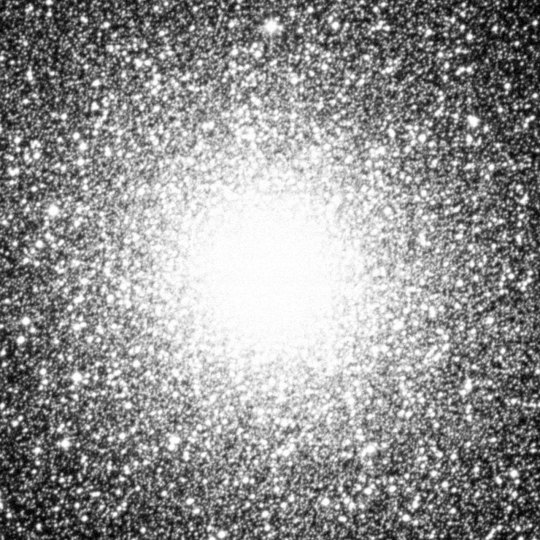
Rejuvenated Stars
36 notes
·
View notes
Text
Diez Meses ❤️

❤️ 08/02/2024 ❤️
El cúmulo globular de estrellas 47 Tucanae es una joya del cielo austral. También conocido como NGC 104, deambula por el halo de nuestra Vía Láctea junto con otros 200 cúmulos globulares de estrellas. El segundo cúmulo globular más brillante (después de Omega Centauri) visto desde el planeta Tierra, 47 Tuc, se encuentra a unos 13.000 años luz de distancia. Se puede observar a simple vista cerca del cielo cerca de la Pequeña Nube de Magallanes en la constelación del Tucán. El denso cúmulo está formado por cientos de miles de estrellas en un volumen de sólo unos 120 años luz de diámetro. Las estrellas gigantes rojas en las afueras del cúmulo son fáciles de distinguir como estrellas amarillentas en este nítido retrato telescópico. El cúmulo globular muy compacto 47 Tuc también alberga una estrella con la órbita más cercana conocida alrededor de un agujero negro
0 notes
Text
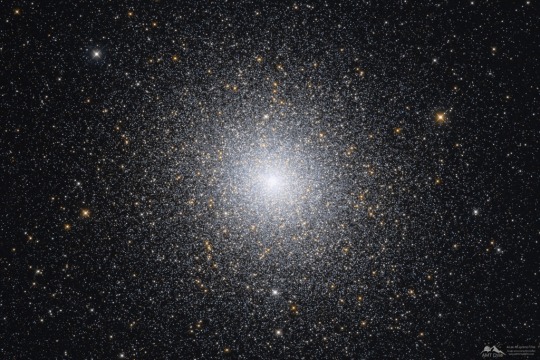
APOD February 8, 2024
Globular Star Cluster 47 Tuc
Globular star cluster 47 Tucanae is a jewel of the southern sky. Also known as NGC 104, it roams the halo of our Milky Way Galaxy along with some 200 other globular star clusters. The second brightest globular cluster (after Omega Centauri) as seen from planet Earth, 47 Tuc lies about 13,000 light-years away. It can be spotted with the naked-eye close on the sky to the Small Magellanic Cloud in the constellation of the Toucan. The dense cluster is made up of hundreds of thousands of stars in a volume only about 120 light-years across. Red giant stars on the outskirts of the cluster are easy to pick out as yellowish stars in this sharp telescopic portrait. Tightly packed globular cluster 47 Tuc is also home to a star with the closest known orbit around a black hole.
©Marco Lorenzi
0 notes
Text
Küresel Yıldız Kümesi 47 Tuc
Günün Astronomi Görseli 8 Şubat 2024
Görsel & Telif: Marco Lorenzi, Angus Lau, Tommy Tse
Küresel yıldız kümesi 47 Tucanae, Güney gökyüzünün bir mücevheri. NGC 104 olarak da bilinen küme, 200 adet başka küresel yıldız kümesiyle birlikte Samanyolu Galaksisi’nin halesinde dolanıyor. Dünya’dan görüldüğü şekliyle (Omega Centauri’den sonra) ikinci en parlak küresel küme olan 47 Tuc yaklaşık 13…

View On WordPress
0 notes
Text
Capturan la mejor radioimagen de un cúmulo estelar
Un equipo de astrónomos utilizaron el telescopio ATCA de @CSIRO_ATNF en donde lograron crear la imagen de radio más detallada hasta ahora de un cúmulo globular y han encontrado algo inesperado en el centro.
Agencias, Ciudad de México.- Un trabajo publicado en ‘The Astrophysical Journal’ muestra como astrónomos han llegado a producir la imagen de radio más sensible jamás obtenida de un antiguo cúmulo de estrellas.
En concreto, la imagen es del segundo cúmulo globular más brillante del cielo nocturno, conocido como 47 Tucanae, y fue producida por un equipo dirigido por el nodo de la Universidad de…

View On WordPress
0 notes

